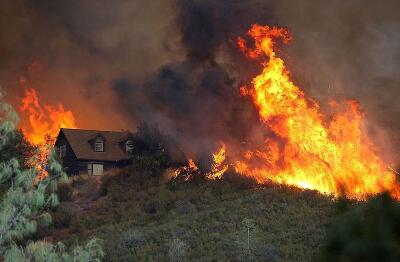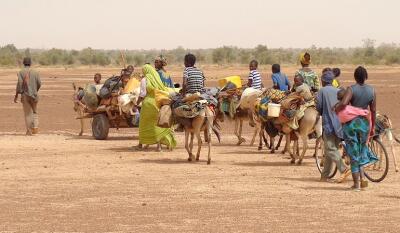Global Risks 2018: Drastic Concern for the Environment
The Global Risk Report, published by the World Economic Forum (WEF) each year, cited environmental risks as one of the most prominent risks for the future.
After a year of disastrous weather events in Florida, Texas, and Puerto Rico, record-breaking temperatures, and the first rise in CO2 emissions in four years, the damage being done to the environment is unmistakable.
Environmental Risks and Challenges
The Global Risk Report includes the Global Risks Landscape, a methodology in which surveyors are asked to assess the likelihood of the individual risk on a scale of one to five (very unlikely to happen to very likely to occur). They are also asked to assess the impact of each risk on a scale of one to five (minimal impact to catastrophic impact).
All five risks in the environmental category of the report (extreme weather events, natural disasters, failure of climate change mitigation and adaption, biodiversity loss and ecosystem collapse, and man-made environmental disasters) occupied the top right quadrant of the graph created by the responses, indicating that surveyors felt these environmental risks were very likely and the impact of the risks would be catastrophic.
According to the WEF, the most pressing environmental challenges we face are extreme weather events and temperatures; accelerating biodiversity loss; pollution of air, soil, and water; failure to mitigate and adapt to climate change; and transition risks as we move to a low-carbon future.
Extreme Temperatures
Last year, numerous instances of extreme temperature were experienced throughout Southern Europe, Eastern and Southern Africa, South America, parts of Russia, and China. California observed its hottest summer ever and by the end of November, wildfires burning across the United States were at least 46 percent above the 10-year average.

According to NASA, global surface temperatures last year were the second hottest since 1880. Average temperatures were 1.62 degrees Fahrenheit warmer than the average between 1951 and 1980, when global temperature measurements became possible.
The only year warmer was in 2016.
In addition to NASA's findings, a separate analysis by the National Ocean and Atmospheric Administration deemed 2017 as the warmest year on record. Data from both agencies show that the five warmest years all occurred since 2010.
Loss of Agricultural Production
These rising temperatures and increased frequency of heat waves are wreaking havoc on agricultural systems that were already strained from the extreme temperatures of 2016.

There is an estimated one-in-twenty chance per decade that heat, drought, and flood events will cause failure of maize production in the world's two main growers, China and the United States. This type of failure in production would lead to widespread famine and hardship spanning across the globe.
World Health Risks
In 2012, the World Health Organization (WHO) reported that indoor and outdoor air pollution were responsible for 6.5 million (11.6 percent) of global deaths. In 2016, 92 percent of the world's population lived in areas with air quality levels that exceeded WHO guidelines.
Most of the pollution-related deaths are concentrated in low- and middle-income countries and are causing strain to already broken health systems and finances.
In November 2017, a public health emergency was declared in Delhi, India when air pollution reached more than 11 times the WHO guidelines.
Hopefully, this alarming report produces a sense of urgency to amplify the fight to mitigate the worsening of climate change and prepare for the adaptive changes that must take place.
